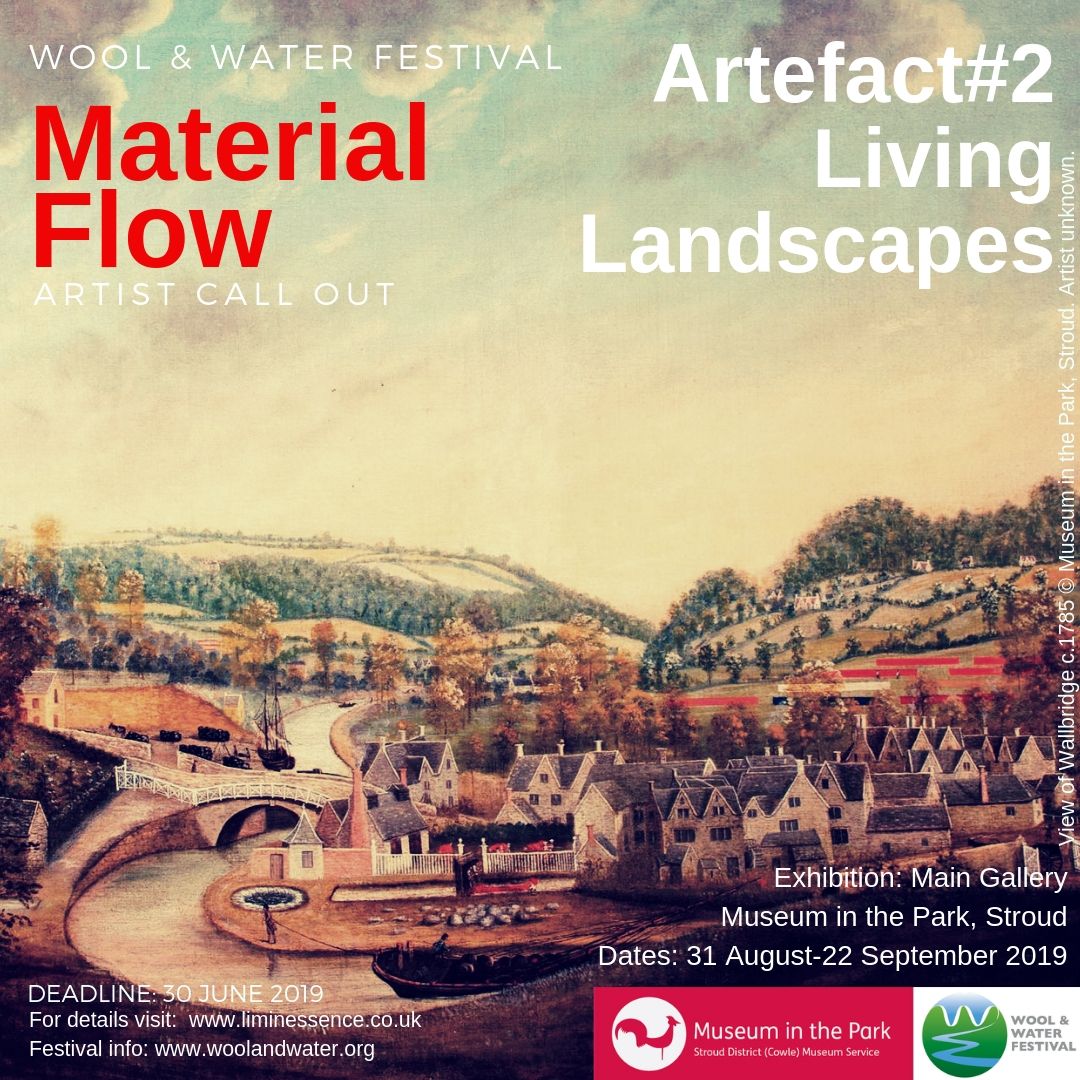GEN DOY performs WATER at the Material Flow opening event. Museum in the Park
WORKSHOP
SATURDAY 21 SEPTEMBER
Functional Felt & Fibre Cord with Connie Flynn
Fleece to felt, this experimental felt making workshop will be an opportunity to explore neutral fibres, to create your functional felt tool roll. It will give you an understanding of the felt making process with the focus on fabric, cords and pockets. The outcome possibilities are endless, the felt rolls could be used as a for tools, brushes, pencils, pegs etc.
Connie Flynn
Connie is a multi-skilled textile artist/maker, who has exhibited her work for over twenty seven years. She has a B.A. (Hons) in Art and Education, and a Post Graduate qualification in Art Therapy, with much experience of teaching all ages and abilities and extensive experience of arts residencies in a variety of contexts. In 2015 she completed a B.A. (Hons) in Contemporary Textiles in Shetland, developing her arts practice with a Shetland influence.
Website: https://themakers.directory/craft-directory-members/connieflynn/products/
Date - 21st September 2019
Time: 2pm - 5pm
Materials - Supplied in full
Venue - Museum in the Park, Stroud
For further details: https://museuminthepark.org.uk
Ebb & Flow Pegs by Connie Flynn
Ebb & Flow Pegs by Connie Flynn
—————————-
EVENTS
Artists and curator ‘in conversation’ sessions
In these sessions, artists will talk about their work in relation to the Material Flow exhibition and the broader topics associated with it. These are informal discussions encouraging dialogue on museum artefacts, cultural heritage and the contribution to contemporary art practices.
——————————
Sunday 15th September
‘Responding to material histories’
Responding to cloth with textiles Heidi Flaxman & Sian Lester Exploring depths in/on surface: Christine Felce, Susan Kester, Edward Jeavons The postcolonial turn: Victoria Burgher in conversation with curator Patricia BrienAnna Cady in conversation---------------Sunday 22nd September
‘Futuring material histories’
Material currencies: Bridget Kennedy & Mair HughesCapturing an essence: Tara Downs & Bart SabelTime: 2pm - 4pmVenue: Main Gallery, Museum in the Park, Stroud
------------------Artist call out - Material Flow
Wool & Water Festival, 2019
Exhibition at the Main Gallery, Museum in the Park, Stroud
Exhibition dates: 31st August - 22nd September 2019
Application due date: 30th June 2019
Curator: Patricia Brien
This year we are looking for works of individual interpretation and creative engagement with one or more selected artefacts (see below) responsive to the broader historical, cultural, natural or industrial backgrounds. Some suggested guidance points & ideas are listed with the artefacts but are not prescriptive. There are many factors that made this renowned woollen material possible and artists are invited to consider those wider issues. We are looking for an imaginative range of interpretations – the artist’s view.
The work will be of interest to general audiences at the Material Flow exhibition and related Wool & Water Festival events.
Artists may respond in a variety of artistic media – 2D and 3D formats including textile art, painting, illustration, photography, installation, or moving image. DEADLINE 30th June
[In addition, Hawkwood College are making available a funded five-day full board artist residency at their venue set in the Cotswolds. There are 2 residencies available for submitting artists who can apply through the Wool and Water Festival website and the successful applicants will be chosen irrespective of whether their work is chosen for the exhibition.]
Artists are invited to upload up to 3 images for selection for a fixed admin fee towards marketing costs, payable to the Stroud Textile Trust charity, of £10. Please see artists submissions on www.woolandwater.org
Enquiries: patricia.brien16@bathspa.ac.uk
THE ARCHIVE PIECES
Water & hydropower
Medieval mill paddles
Workers & the working life
Artisans and Guilds
Small-scale industries
Seasonal rhythms
Life along the canals and rivers
Textile and trade routes
‘Stroud Samples’ - markers of quality
The broadcloths - adopted as ‘wearing blankets’ by the indigenous peoples of North America
[Further reading: Willmott, C (2005) ‘From Stroud to Strouds: The Hidden History of a British Fur Trade Textile’ in Textile History, 36:2, pp 196-234]
Shifting industry - from Stroud to Yorkshire.
Dyeing processes - plants, insects, industry secrets
iii. Living Landscapes
Architecture
Agricultural practices
Cloth industry, trade & capital
Stroud Valley waterways
Colours & Landscape
Culture & community
iv. Human-Animal relations
The ‘Prize’ sheep painting trend
[The Sheep painting dated to c1800 and is one of two, the second was painted by Thomas Holm but this one on display in the Museum in the Park is not signed. The museum has no history of either of them, but portraits of this type usually depicted a ‘prize’ animal. Reading on this intriguing historical trend here: https://www.atlasobscura.com/articles/britain-cows-pig-sheep-paintings-livestock
Sheep & wool and transformative economic prosperity
Sheep husbandry practices
Environment / ethics (contemporary considerations)
v. Redcoat Military uniform
Scarlet cloth produced in Stroud Valleys over many centuries.
Redcoat military uniform
Masculine tailoring techniques
Empire / Colonialism
Dress code and indigenous ‘Jacket wearing’ in the colonies
[Further reading on first contact indigenous aboriginal warrior ‘Jacket wearing’:
Karskens, G. (2011). Red coat, blue jacket, black skin: Aboriginal men and clothing in early New South Wales. Aboriginal History,35, 1-36. ]
Water mill paddles © Museum in the Park, Stroud.
‘Stroud Samples’ Kindly reproduced with permission by Hudson’s Bay Company Archives | Archives of Manitoba
View of Wallbridge c.1785 © Museum in the Park, Stroud. Artist unknown.
A sheep and its owner, c 1800. © Museum in the Park, Stroud. Artist unknown.
Red military jacket © Museum in the Park, Stroud.















